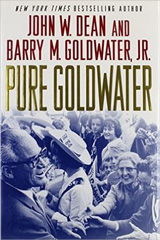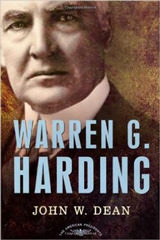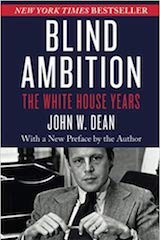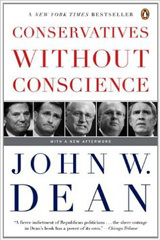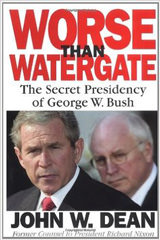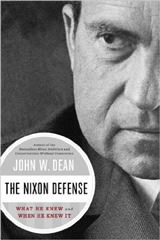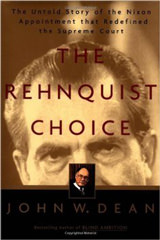A lot of politicians I know and have known, both on the right and left, talk a great deal about making the world a better place. Many claim this desire is what led them into public service. Undoubtedly, we will hear much about making the world a better place during the forthcoming campaigns of the 2016 presidential election cycle. We hear it during every election cycle. The problem is about ninety-nine percent of that is talk and one percent genuine action. For this reason, it is remarkable to know a person who in fact has truly dedicated his life to making the world better and is all action with little talk.
David A. Hamburg is that person. A central theme of his life since childhood has been the prevention of human suffering. From the outset, he has acted on an intuition most everyone possesses but largely ignores. When growing up in a working-class neighborhood in Evansville, Indiana, David was busy learning from, and giving to, his family and community where he attended primary and secondary school, always working “at the process of getting on well, there’s no question about that,” he recently acknowledged. He attributes his father’s influence to his own life of public service. His intellect and disposition propelled at a 24/7 pace through college and medical school during World War II when the country desperately needed medical doctors.
So began his career, and I am quoting and drawing from his new autobiography. His publisher, in announcing the autobiography, described David Hamburg as “one of the most influential and well-connected nonpolitical figures of the past sixty-five years.” Actually, this is something of an understatement. I could fill this column and several more with his CV, but I will only touch a few high points so you can appreciate the nature of his efforts to make the world better:
- Currently he is Visiting Scholar, American Association for the Advancement of Science, where he served as President, and he is also the Dewitt Wallace Distinguished Scholar, Weill Medical College at Cornell University, New York City;
- David is President Emeritus of the Carnegie Corporation of New York, where, as President from 1982-1997, he selectively passed out millions upon millions of dollars;
- He was Professor and Chairman of the Department of Psychiatry and Behavioral Sciences and Reed-Hodgson professor of Human Biology at Stanford University – a department he built from scratch;
- President of the Institute of Medicine, National Academy of Sciences, where for many years he also undertook and supervised an array of innovative research programs; and
- John D. MacArthur Professor of Health Policy at Harvard University, where he helped bring together the medical school with the rest of the university.
David has served on boards of directors/trusteeships of a number of institutions he believes important (e.g., Rockefeller University and American Museum of National History), and he has been awarded numerous honorary degrees and peer recognition awards, such as when Senator Sam Nunn–as a member of the Carnegie Commission on Preventing Deadly Conflict, which was assembled and co-chaired by David–went to the Senate Floor on September 26, 1996 to mention his extraordinary work. But I find particularly telling his receipt of the Public Welfare Medal of the National Academy of Sciences, that academy’s most prestigious award presented annually to honor extraordinary uses of science for the public good. The medal has been bestowed on people like Herbert Hoover, John D. Rockefeller, Carl Sagan, and Melinda and Bill Gates, and was awarded to David in 1997, as the press release summarized: “For his dedication to improving the quality of life for young people; for his efforts to prevent violent conflict among nations; and for his effective leadership of the Carnegie Corporation, which has brought science and technology to bear on the paramount issues of our time.” David has also received the highest civilian award that can be made by the President of the United States, the Presidential Medal of Freedom, which President Clinton awarded him in 1996. That is the sort of recognition David really doesn’t talk about.
I have two observations about his book: The publisher is charging dearly for his autobiography, A Model of Prevention: Life Lessons, which unfortunately is the norm for academic publishing houses, and David also did not have it indexed, which is always done at the author’s expense. While David is probably horrified at the price tag, he may be secretly pleased that this will limit the audience, which is consistent with his modesty. Additionally, I wonder if he did not index the book because he knows so many important people, so he was surely concerned that they would give his book a “Washington read,” meaning they would start with the index to see what was or was not said about themselves. By his nature, David would say something nice about everyone he has ever met but that would be a “who’s who” of the world, and that too would be immodest. Suffice it to say he mentions just enough people with whom he has worked over many decades, launching many of them on to their own remarkable careers, that the reader can appreciate the positive ripple effect he has had on those with whom he has been associated.
I know David because his son Eric, a former Capitol Hill aide who has become an accomplished film maker, is a longtime friend. While I did not ask Eric, who has collaborated with his father on a number of documentaries and books, I suspect this autobiography was largely dictated. Its tone is like a long conversation with David about his remarkable life. He is never didactic but rather explains how he learns from others, although it is clear he teaches by example. At heart I get the feeling he loves being a researcher, but because I have met some of his students, I know he was also a wonderful professor. His natural and acquired skills for organization, administration and collaboration resulted in his going way beyond the lab and classroom. While we learned he never wanted to run a university—and I suspect he has been offered the presidency of many—we also learned why he did not take on that assignment. He confesses he does not like raising money, which is not surprising for he is a giver, not a taker, and university presidents spend the majority of their time raising money. While David did leave the academic world to head the famed Carnegie foundation, he stayed connected by helping to fund important academic research and studies.
As I read this autobiographical work, which reveals the relationships of the paths he has chosen to travel, I found a recurring theme that might benefit anyone who pursues the sciences, or public service. David’s collaborative nature runs throughout his account, via situations where he combined his constant search for new insights along with new ways and methods with which to deal with old and recurring problems. As his career developed, we find him thinking in an interdisciplinary manner, and as he is exposed to the larger and larger world, he increasingly thinks internationally, not to mention with recurring genius all along. While he titles his book A Model of Prevention: Life Lessons, what he has provided the reader are highlights of a model life.
In medical school, David discovered his interest in stress disorders, and genetics, not to mention what would become his later focus on violence and human aggression. Providing medical care for those injured during World War II and the Korean War gave him real-world experiences for understanding stress and the horrors of aggression and conflict, experiences he took with him to the laboratory and classroom. In addition to his son Eric, his daughter Margret and wife Betty come in and out of the story. It is an extraordinary family. After graduating from Vassar, his wife Betty became the first woman to graduate from Yale Medical School, and she would go on to have a remarkable career paralleling David’s, in both medical research and philanthropy. Daughter Margret, a graduate of Harvard Medical School, just completed six highly successful years as President Obama’s head of the Food and Drug Administration. Appropriately and understandably, David takes pride in his remarkable family.
The part of this story that Hollywood should notice occurred when David created laboratories to study the evolution of aggression in the wilds of Tanzania, and at Stanford University, where he became the youngest medical school department head in the country. In Africa, David encountered a young graduate student also studying chimpanzees in Tanzania, Jane Goodall, whom he befriended, and was later able to assist in obtaining funding to continue her work. A turning point in his life occurred in 1975 in Africa, when he faced a crisis that changed the direction of his work. He had sent four of his Stanford students to study primate behavior in Tanzania, where they were kidnapped by rebels from Zaire and held for ransom. David departed immediately for Africa to resolve the situation, meeting with the hostage-takers in remote locations and resolving the problems to get the students back in about as dangerous a situation as can be imagined. He succeeded, and like all his life experiences, he drew new lessons from his exposure to violence, disease, ignorance, and poverty. These were problems he has tirelessly addressed throughout his distinguished lifetime.
David has shared his findings, his thinking, and scholarship in countless papers and talks, as well as in several books: Today’s Children: Creating a Future for a Generation in Crisis (1992); No More Killing Fields: Preventing Deadly Conflict (2002); Learning to Live Together: Preventing Hatred and Violence in Child and Adolescent Development (2004); and Preventing Genocide: Practical Steps toward Early Detection and Effective Action (2008).
If you want to visit with a man who has actually made the world a better place, I urge you to spend a few hours with David Alan Hamburg’s A Model of Prevention: Life Lesson. It strikes me that the Carnegie Corporation should post David’s book on their freely downloadable books webpage, plus send a hard copy to every library in the United States, for both the author and his book are certainly consistent with Mr. Carnegie’s goal of creating “real and permanent good in this world.”







